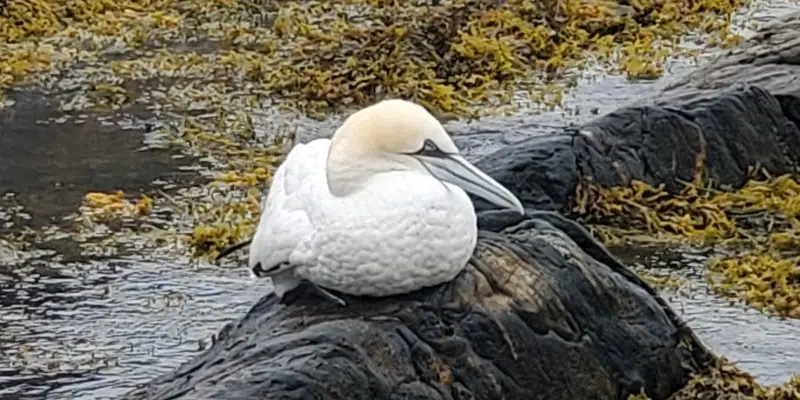Local seabird populations have been hit hard by the spread of avian flu that raged through colonies in this province and throughout Eastern Canada.
Wildlife biologist and wildlife emergency response coordinator with the federal department of Environment, Dr. Rob Ronconi, says the virus was first noticed in wild populations in Newfoundland in a gull last December.
It then spread through nesting colonies of seabirds over the summer, spread primarily by their habit of gathering in densely-packed nesting groups, usually on islands.
The spread of the illness appears to be waning somewhat as the birds head back out to sea for the winter months, but “the virus is still out there and is not going to go away.”
Ronconi says the hardest hit species include gannets and turres—also known as the common murre. They’re still gathering data to get a better idea of the real impact on local populations.

Dead Northern Gannet and a Common Murre sick with Avian Influenza in August of 2022 along the Northeast coast of Newfoundland. Photo via Environment and Climate Change Canada, Sabina Wilhelm.
Information gathered this summer off Newfoundland and Labrador shows approximately 10,000 wild birds have been reported as sick or dead. He says much of that information has come to them from public reporting, but they’ve been gathering their own data as well.
Researchers are heading back into the field next spring to gather more data once the birds resume nesting activity.
























